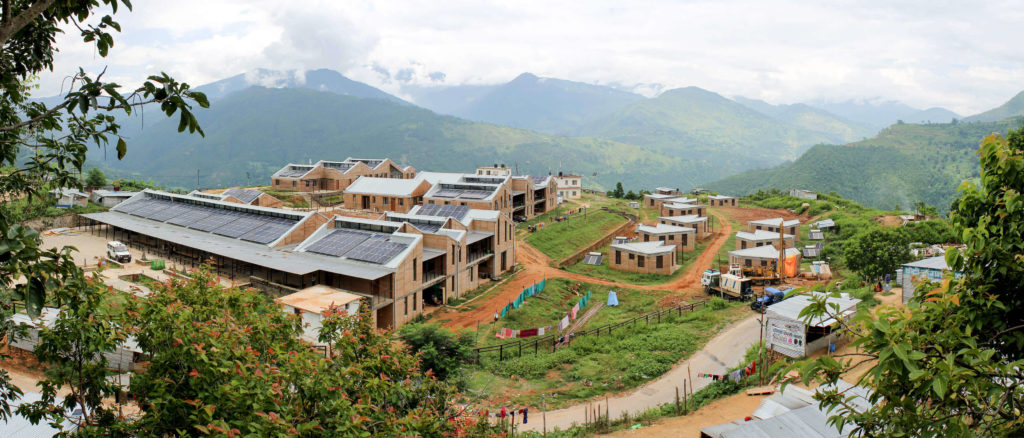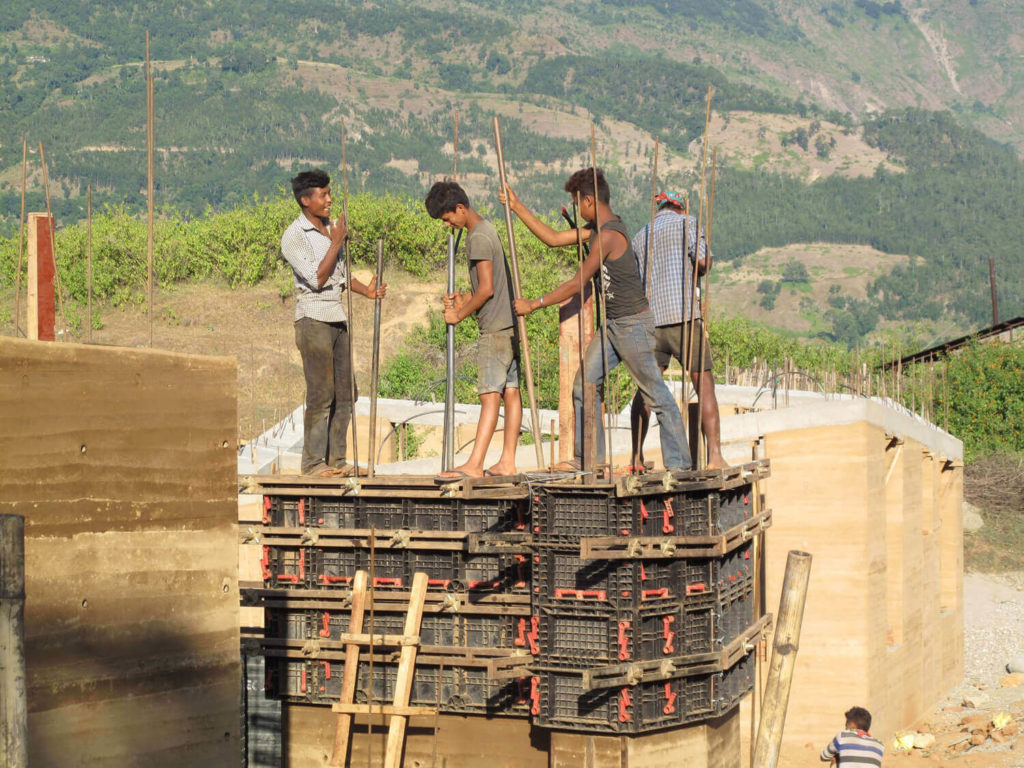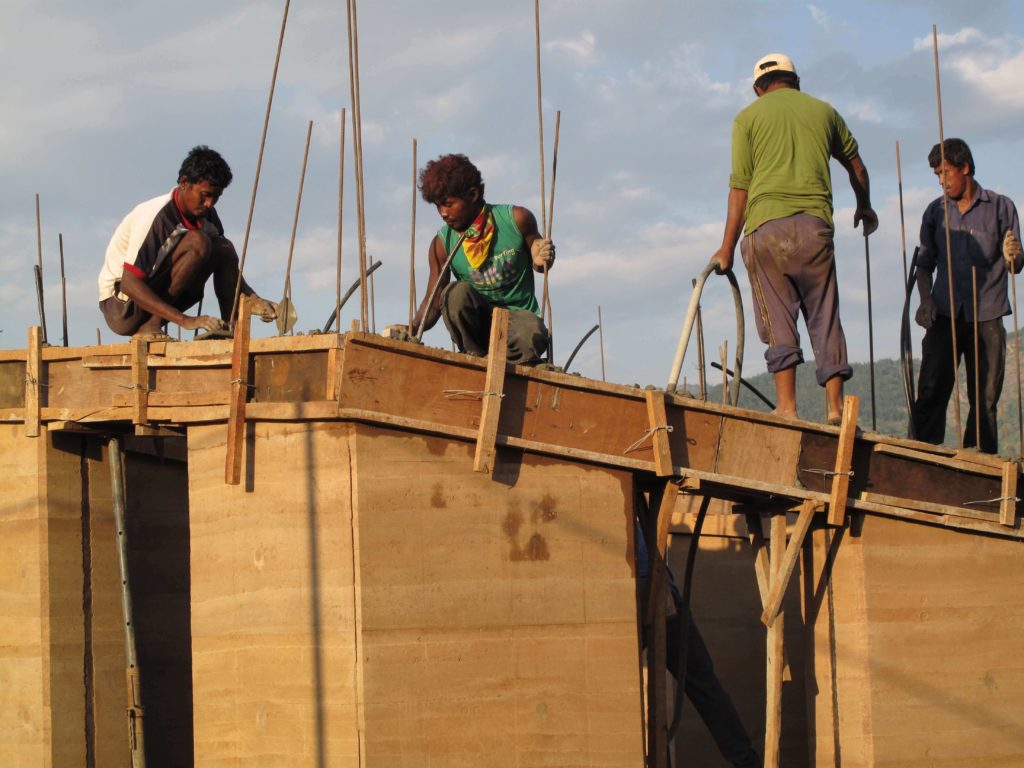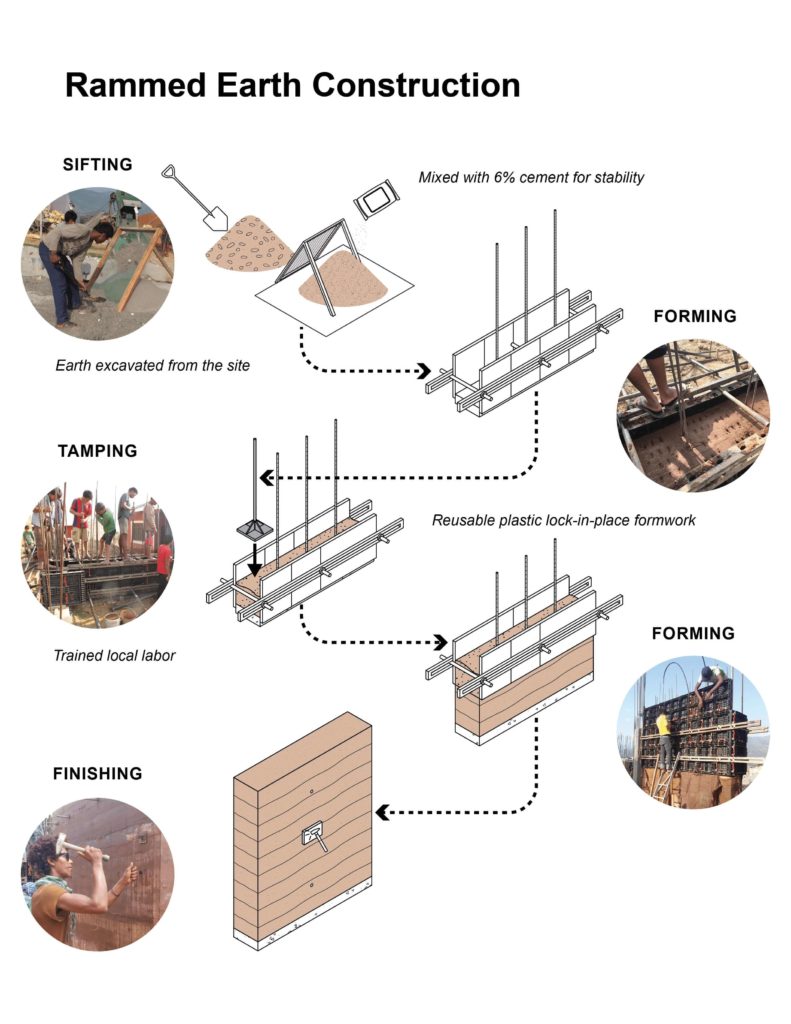Nepal’s Bayalpata Hospital won an international award in the Health Category at the Global Architecture Festival held in Amsterdam. The hospital in is a public-private partnership and is built almost entirely using rammed earth.
‘This is an example of when architecture provides more than a building. Although modest in scale and architectural expression is delivers a massive leap in healthcare provision in a region with scarce resources,’ jury members of the Global Architecture Festival said in their citation. ‘A great example of an architect listening closely and responding intelligently to site and situation. The building is rooted in its site through its use of onsite materials and has impeccable zero carbon design credentials.’
Bayalpata was started in 2009, and took over a defunct government hospital to show that accessible and free medical care was possible in a rural Nepal district that had the highest maternal and child mortality and lowest lifespan. Today, the hospital treats 100,000 patients a year. Paid for mostly by crowd-funding, the $4 million three-phase expansion of Bayalpata Hospital was completed earlier this year.
“Our specs were to use local materials as much as possible, keep energy costs low, and respect the local context,” explains Arun Rimal, a Nepali architect with the US-based Office of Structural Design (OSD). “The rammed earth uses local clay and sand from the river. The thick walls give thermal mass and the skylights optimize sunlight and ventilation.”
The project faced unforeseen logistical problems due to the 2015 earthquake and Blockade. But the four-year construction was delayed by just six months because it did not rely too much on bricks, steel and other imported material. 
It has a rainwater harvesting system, treats its wastewater and has a network of greywater-irrigated terraces and bioswales to control erosion and recharge the aquifer. A 100kw solar array on the roof meets most of the hospital’s electricity needs, even powering the facility’s only air conditioning unit in the surgical ward.
“It was a deliberate design decision to work with the natural environment as much as possible and also to address the cultural context,” says Tyler Survant from Sharon Davis Design in New York. “We had to plan for a different kind of hospital from the West: here you have patients and relatives who have traveled for days on foot to get here.”
Bayalpata has public outdoor spaces and canopied courtyards to serve as comfortable waiting areas, while the operating theaters and wards are recessed. Staff housing also had to be integrated into the facility since it has full time resident doctors, who live with their families. 
The article doesn’t state this, but I noticed in the photos that this large rammed earth project does apparently have substantial integrated rebar reinforcement as well as a hefty concrete bond beam, which would be essential for earthquake resilience. Also, the rammed earth mix does incorporate 6% cement for stabilization.
You can read the original article at www.nepalitimes.com
